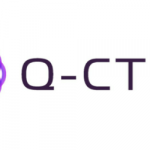Purdue Researchers Develop Programmable Switch to Help Lay Groundwork for Quantum Internet

(Purdue.edu) Purdue University engineers have addressed an issue barring the development of quantum networks that are big enough to reliably support more than a handful of users.
The method could help lay the groundwork for when a large number of quantum computers, quantum sensors and other quantum technology are ready to go online and communicate with each other.
The team deployed a programmable switch to adjust how much data goes to each user by selecting and redirecting wavelengths of light carrying the different data channels, making it possible to increase the number of users without adding to photon loss as the network gets bigger.
If photons are lost, quantum information is lost – a problem that tends to happen the farther photons have to travel through fiber optic networks.
“We show a way to do wavelength routing with just one piece of equipment – a wavelength-selective switch – to, in principle, build a network of 12 to 20 users, maybe even more,” said Andrew Weiner, Purdue’s Scifres Family Distinguished Professor of Electrical and Computer Engineering. “Previous approaches have required physically interchanging dozens of fixed optical filters tuned to individual wavelengths, which made the ability to adjust connections between users not practically viable and photon loss more likely.”
Instead of needing to add these filters each time that a new user joins the network, engineers could just program the wavelength-selective switch to direct data-carrying wavelengths over to each new user – reducing operational and maintenance costs as well as making a quantum internet more efficient.
The wavelength-selective switch also can be programmed to adjust bandwidth according to a user’s needs, which has not been possible with fixed optical filters. Some users may be using applications that require more bandwidth than others, similarly to how watching shows through a web-based streaming service uses more bandwidth than sending an email.



















